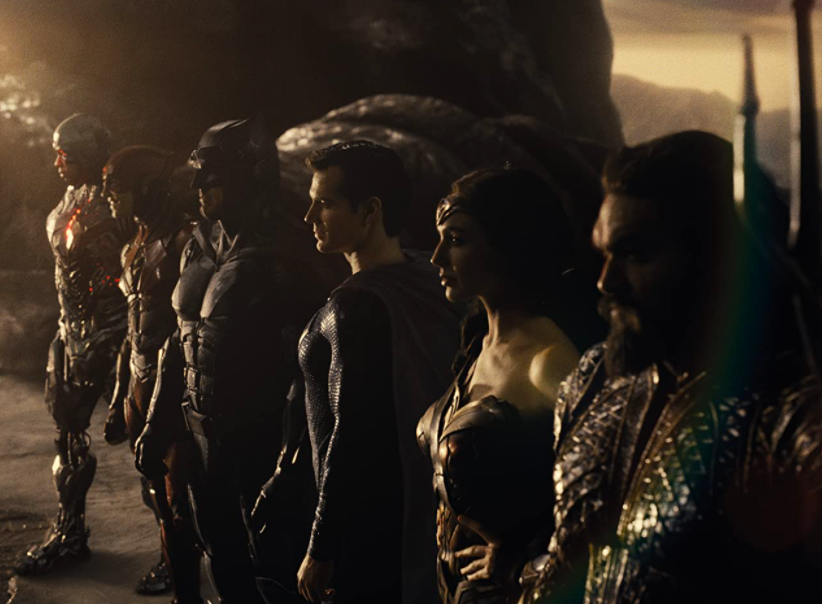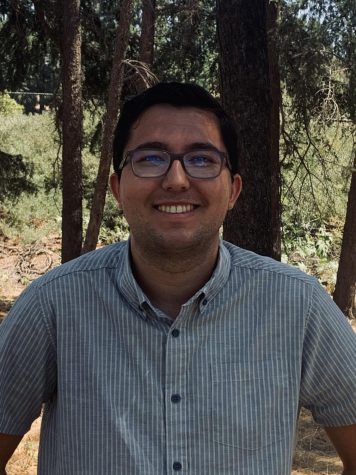Zach Snyder’s increasingly despairing look at DC’s most iconic heroes leaves a bad taste in the mouths of viewers. HBO Max audiences will witness mass destruction, hostage situations involving children and disturbing sequences of shooters screaming profanity and gunning down large groups of people—spurring on triggering emotions after the events of this past week. Viewers are certain to be searching for hope and not the bleak, blood-soaked material focused on in “Justice League.” Previously released in theaters, Synder reimagines the events and characters of “Justice League” through his own perspective, one much similar, though more violent, than before.
STUNNING, DARK VISUALS
Though the movie lacks good storytelling, the visual aspects of the film are impossible not to applaud. While shrouded in darkness for nearly the entirety of the four-hour film, the movie allows for stunning special effects, sharp colors and an immersive look into a reimagined, dystopian Earth.
With explosive action throughout, producers make each moment immersive and believable despite the clear fictional components of the film—galactic creatures, Amazon warriors and supernatural heroes. Synder focuses on the destructive nature of the storytelling, giving slow-motion, full-screen exposure to all of the lasers, sword fights and extraterrestrial battle sequences.
UNORIGINALLY R-RATED
Including R-rated superhero flicks in a movie franchise is not a new feature in cinema. Marvel has included a number of well-done, memorable movies dedicated to more profane, gritty heroes that have added to the franchise—“Deadpool” and “Logan” are some of the most recognized. But Snyder throws out scene after scene of brutal violence and a scattering of profanity—seemingly weak attempts to be shocking—rather than making thought-provoking art that includes mature, intense material. The only purpose of this film seems to be proof that DC can make R-rated films and can increase the darkness of their storytelling, despite repeated criticism from fans and critics for this very concern.
While “Birds of Prey” brought the same kind of content, the franchise seemed to incorporate the humor and stylized violence that fans have enjoyed for a decade from Marvel movies, yet Synder backtracks into the same dark stories that have nearly ruined the reputation of DC Comic films. Unable to learn from the past and the box office, DC remains stagnant and unwavering in their stories—darkness and violence taking the forefront, humor and moments of levity nowhere to be seen.
SIX HEROES, FOUR HOURS OF FILM
Superhero movies are known for the quick, explosive stories and addictive, fast-paced narratives, yet “Justice League” crawls for nearly the entirety of the film. With such scattered narratives and so many heroes competing for screen time, Synder fails to help audiences truly connect with these characters, giving only surface-level, already realized stories that audiences are well-accustomed to.
Even with an all-star cast, including Amy Adams, Ben Affleck, Gal Gadot and Diane Lane, “Justice League” continues to be lackluster and fails to demonstrate any character progression from the previous DC movies focused on these characters. The fact that this collection of famous Hollywood actors cannot save Synder’s overly long film nods toward the many shortcomings of not only the franchise but this form for storytelling.
WHAT’S NEXT FOR DC?
After the re-release of “Justice League,” the future for DC is uncertain. As Marvel continues to dominate in the realm of superhero releases, audiences will be waiting to see how DC follows up with competitors, as well as with the feedback from audiences and critics. With so much hype and conversation surrounding this film, both the longevity of the movie and the continued dive into darkness, DC continues to disappoint and depress with its inability to connect with the fun and humor that has popularized superhero films.












